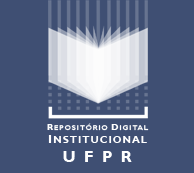TERRESTRIAL LASER SCANNER FOR METRIC EXTRACTION IN EUCALYPTUS UNDER DIFFERENT IMPLANTATION SYSTEMS
DOI:
https://doi.org/10.5380/rf.v51i2.70699Palavras-chave:
forest inventory, point cloud, simple scanning.Resumo
This study evaluates the influence of the cropping system in the extraction of Eucalyptus benthamii metrics by terrestrial laser scanner (TLS) and by traditional inventory. The hypothesis is that the extraction methods do not differ significantly from each other. The study area consists of a conventional planting system under 3 x 2 m spacing, and a CFI (crop-forest integration) system under 14 x 2 m spacing. To obtain the variables DBH (diameter at 1.3 m aboveground) and total height (H), we used a traditional inventory and collected data with TLS. For point cloud processing, we manually extracted the metrics DBH and H by simple scanning. We estimated total volume (V) by a fitted equation that matches the characteristics of the study area. To estimate above-ground biomass (AGB), we fitted models based on AGB data provided by the NITA project and by BIOFIX. Better visualization of trees in the CFI system facilitated metric extraction, leading to less data variability. In addition, DBH, V, and AGB values were higher in the CFI system compared to the conventional system. However, when including the number of trees per hectare, the conventional system is more productive. The initial hypothesis was confirmed. Therefore, metric extraction using the traditional inventory and TLS methods did not differ significantly for the two cropping systems considered.
Downloads
Publicado
Como Citar
Edição
Seção
Licença
Direitos Autorais para artigos publicados nesta revista são do autor, com direitos de primeira publicação para a revista. Em virtude da aparecerem nesta revista de acesso público, os artigos são de uso gratuito, com atribuições próprias, em aplicações educacionais e não-comerciais.A revista, seguindo a recomendações do movimento Acesso Aberto, proporciona acesso publico a todo o seu conteudo, seguindo o principio de que tornar gratuito o acesso a pesquisas gera um maior intrcambio global de conhecimento.
Conteúdos do periódico licenciados sob uma Licença Creative Commons 4.0 Internacional (CC BY 4.0)




